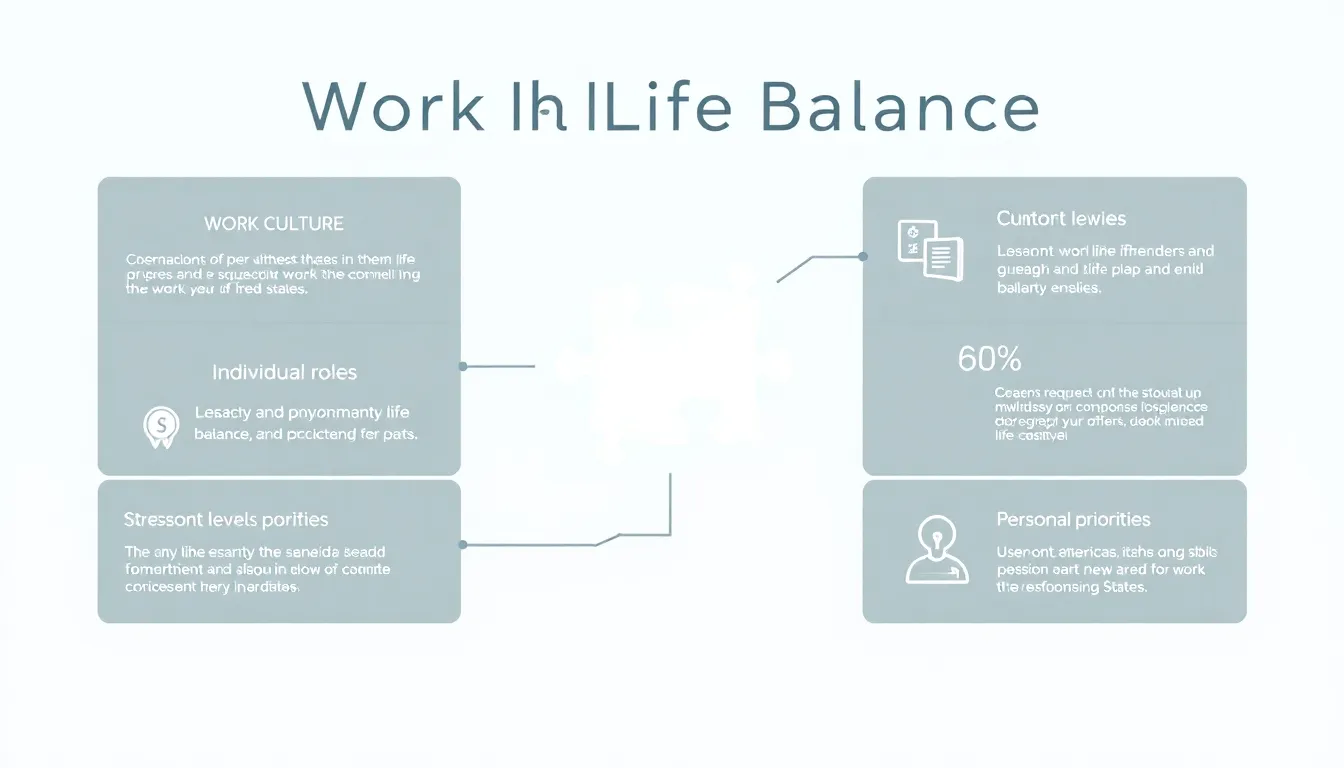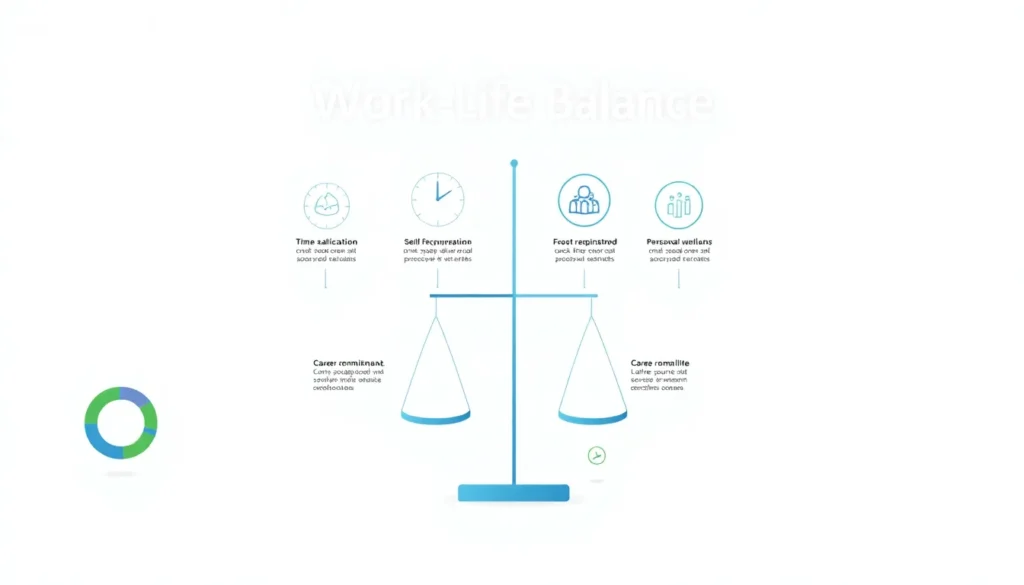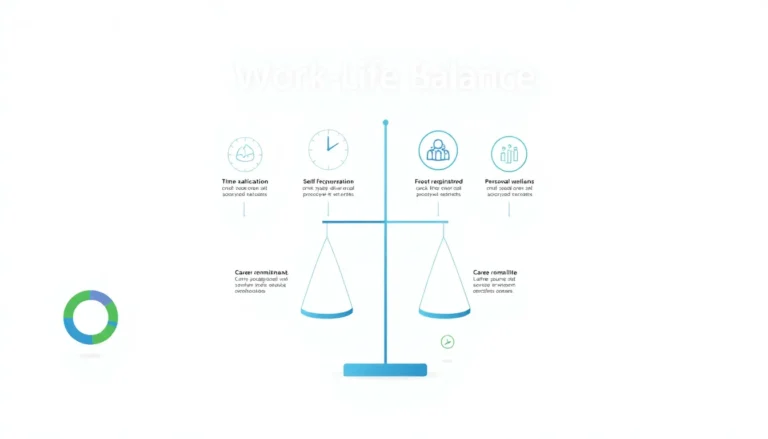Table of Contents
ToggleNavigating the exquisite tightrope of work and life can feel a bit like juggling flaming swords while riding a unicycle, exciting, but totally nerve-wracking, right? The quest for a healthy work-life balance is as crucial as securing that sweet corner office. In this text, we’ll explore essential strategies and create a visual feast in the form of an infographic that helps simplify the complex dynamics of achieving balance. Buckle up: we’re diving deep into this pivotal topic that affects every worker today.
Understanding Work Life Balance

Work life balance typically refers to the optimal arrangement of professional obligations and personal activities, ensuring neither overpowers the other. It’s not merely about dividing the hours between work and life, but rather making sure both domains coexist in harmony. Achieving such a balance might feel like trying to find the last piece of a jigsaw puzzle. Many factors influence this equilibrium, including work culture, individual roles, stress levels, and personal priorities. When one part of life overshadows the other, the effects can manifest in various ways, stress, burnout, declining health. Essentially, work life balance is about personal fulfillment, productivity, and overall well-being.
Importance of Work Life Balance
The necessity for a balanced life isn’t just buzzword bingo: it’s a crucial element for both individuals and organizations. First, consider employees: when individuals maintain a healthy balance, they experience increased job satisfaction and reduced stress. A stressed worker is a less productive one, and no employer wants that. Besides, employees with good work life balance are more likely to remain loyal to their employers. For companies, this translates to lower turnover rates and a more engaged workforce. Also, maintaining a work life balance enhances physical health, emotional stability, and mental clarity. This is why experts underscore the importance of integrating personal growth with career aspirations. In essence, the benefits ripple outward, impacting not just you but the entire organization.
Key Components of Work Life Balance
Achieving work life balance involves several key components, each contributing to overall well-being. Flexibility, for example, plays a critical role. Flexibility can be in work hours, allowing individuals to tailor their schedules to fit personal responsibilities, like picking up the kids or attending a yoga class. Next is support, both from management and peers. Encouragement to take breaks, use vacation time, or adjust workloads is vital. Similarly important is time management. Those with effective time management skills often juggle tasks more efficiently. Finally, prioritize self-care. This includes taking care of physical and mental health through exercise, hobbies, and relaxation. All these elements collaborate, creating a foundation that fosters a healthy balance.
Creating an Effective Infographic
An infographic serves as a visual summary of information, making complex data more digestible. To create an effective infographic about work life balance, start with defining your audience. Who are you addressing? Are they employees, employers, or perhaps HR professionals? Next, gather relevant statistics and data points. Integrate both qualitative and quantitative information, such as surveys on employee satisfaction or research statistics indicating the benefits of work life balance. Consistent branding should be key: use colors, fonts, and styles that reflect your message. Be concise. Your infographic should highlight critical elements without overwhelming the viewer. Visuals, like charts and icons, enhance understanding and retention. Finally, ensure you have a clear call-to-action. What do you want the viewer to do with this information? Share it? Carry out changes at work? Be explicit about next steps.
Examples of Work Life Balance Infographics
Numerous companies and organizations have taken the initiative to create informative infographics centered around work life balance. For example, a well-known corporate giant might showcase statistics illustrating the increase in productivity linked to flexible work arrangements. Another organization could present survey results reflecting employee sentiments towards work life balance initiatives. Infographics produced by mental health organizations often highlight strategies for managing stress and prioritizing self-care. Reviewing these examples can spark ideas, enabling businesses to visualize and communicate their own work life balance initiatives effectively.
Implementing Work Life Balance Strategies
Implementing effective work life balance strategies takes careful planning and commitment. Begin with conducting a thorough assessment of existing policies. Are there flexible hours in place? How well does your organization support mental health and wellness? Gather employee input to identify pain points. Based on these insights, develop policies that encourage balance, such as remote work options or time-off incentives. Training for managers is crucial, too. Management should be equipped to understand the importance of work life balance and ways to support their teams. Finally, ongoing evaluation of these strategies will ensure they evolve alongside the needs of employees. This entire process fosters a culture of well-being, leading to a transformed workplace environment.







